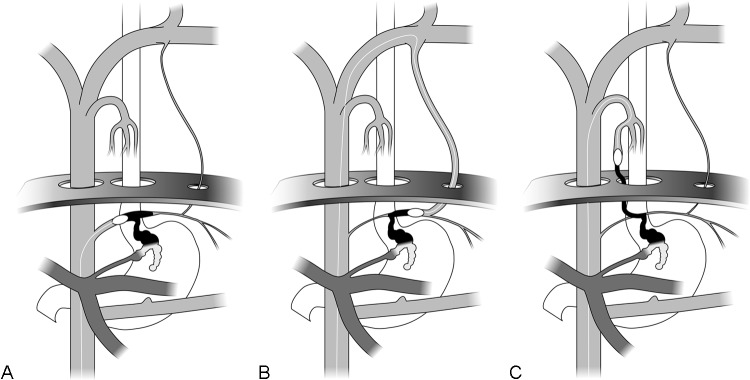Figure 3.
Compare with Figure 2. (A) The balloon-occlusion catheter being advanced from a transfemoral approach and positioned and inflated in the transverse portion of the inferior phrenic vein (Fig. 2: TpIPV) and filling of the gastric varix (Fig. 2: GV) with contrast (black). (B) The balloon-occlusion catheter being advanced from a transfemoral approach and positioned and inflated in the transverse portion of the inferior phrenic vein (Fig. 2: TpIPV) via the left brachiocephalic (Fig. 2: Lt BCV) and pericardial veins (Fig. 2: Peric V),with ultimate filling of the gastric varix (Fig. 2: GV) with contrast (black). (C) Balloon-occlusion catheter being advanced from a transfemoral approach and positioned and inflated in the descending portion of the inferior phrenic vein (Fig. 2: DpIPV) via the azygous arch (Fig. 2: AzA) and azygous-paraesophageal (Fig. 2: AZ) venous system, ultimately filling the gastric varix (Fig. 2: GV) with contrast (black). (Used with permission from Fig. 7B, 7C, and 7D of Saad WEA, Sze DY. Variations of balloon-occluded antegrade transvenous obliteration (BATO) and alternative/adjunctive routes for BRTO. Semin Interv Radiol 2011;28:314–324.

